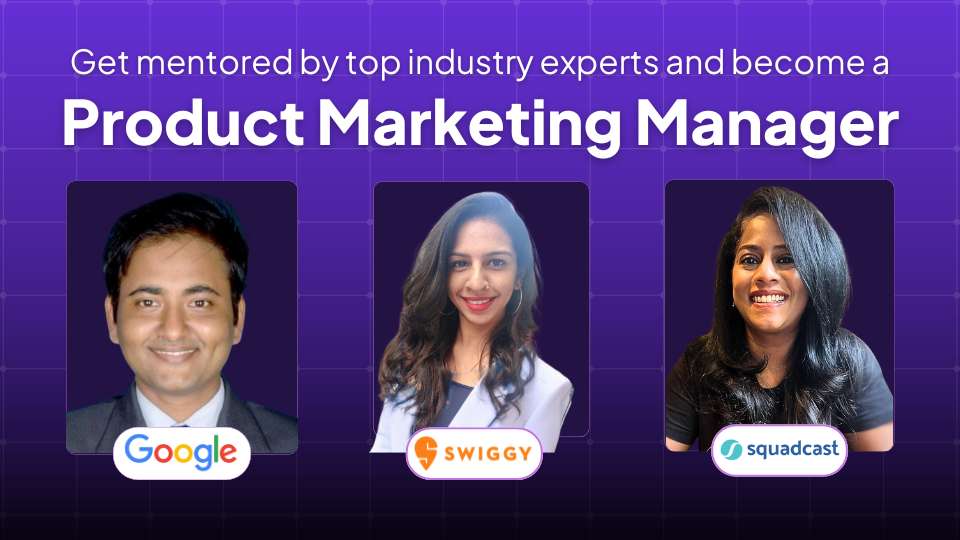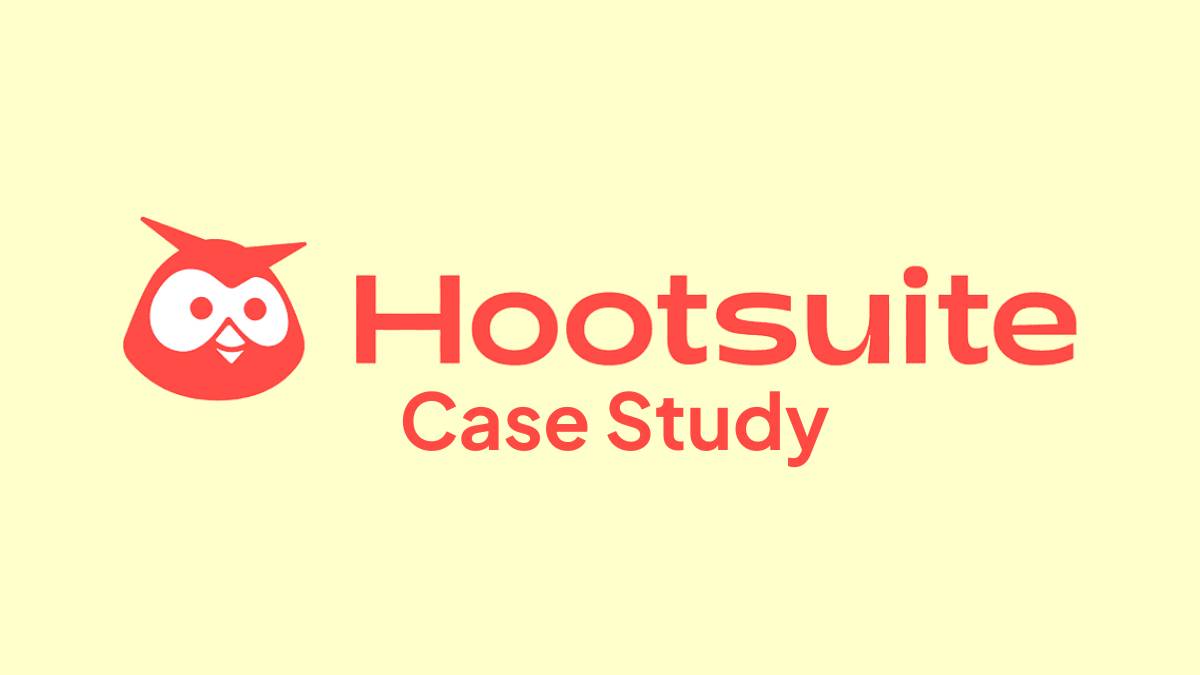Table of Contents
Introduction
Hootsuite is one of those tools that’s quietly everywhere. Most people know it for scheduling posts, but there’s way more under the hood. Over the years, it’s turned into a full social intelligence platform, helping businesses actually understand what works on social media, not just post content.
The thing about Hootsuite is that it doesn’t just sell software. It sells results. Engagement, insights, ROI, you name it. And it backs that up with data, real campaigns, and stories from actual clients.
In this Hootsuite case study, we’re looking at what makes Hootsuite tick. The strategies, the campaigns, the numbers. And why marketers keep watching them closely.
Also Read: Ola Case Study
Hootsuite Overview: From Scheduling Tool to Social Intelligence Platform
How It Started
- Launched in Vancouver, 2008. A simple tool to schedule posts across multiple networks.
- Pretty quickly, businesses noticed it saved a lot of time.
- Fast forward to today, and it’s not just about scheduling anymore. It’s analytics, AI insights, content planning, employee advocacy, the works.
Scale and Reach
- Over 200,000 businesses rely on it.
- Supports more than 35 social networks.
- Big names trust it: NBA, Amway, Corewell Health, The Gym Group.
- Consistently rated #1 on G2 for social media management software.
What the Platform Offers
- Central dashboard for scheduling, analytics, and engagement.
- AI tools to track trends, predict engagement, and suggest content.
- Enterprise features for multi-branch operations and distributed teams.
- Hootsuite Amplify for employee advocacy, helping teams boost reach organically.
Hootsuite’s growth isn’t accidental. It’s about reading the market, listening to clients, and evolving the product smartly. From a scheduling app to a full social performance platform, it’s been a journey.
Also Read: Duolingo Case Study
Hootsuite Product Marketing Strategy
Hootsuite didn’t just survive the crowded social media tools market; it found a way to stand out. The strategy isn’t complicated, but it’s smart. It focuses on three main pillars: data-driven positioning, customer-centered campaigns, and amplification through employees and influencers.
1. Data-Driven Product Positioning
- Hootsuite shifted from being just a scheduling app to an AI-powered social intelligence platform.
- The focus is on understanding audiences, predicting trends, and driving engagement, not just posting content.
- Enterprise and SME clients get insights tailored to their industry. For example, trend reports show what’s working for competitors or emerging social topics.
- This positioning made the platform feel more like a partner than a tool.
2. Customer-Centric Campaigns & Case-Driven Storytelling
- Hootsuite highlights real client success stories. Numbers matter here.
- Campaigns are personalized using Hootsuite’s dashboards, giving businesses analytics and scheduling in one place.
- The stories show measurable ROI, not just vanity metrics.
3. Influencer, Employee Advocacy & Amplification
- Hootsuite Amplify helps employees share content to widen brand reach.
- Results are tangible:
- Strategy combines employee advocacy with social listening. It amplifies campaigns while monitoring sentiment in real time.
- This approach proves that internal teams can drive marketing impact alongside external channels.

Apply Now: Product Marketing Course
Hootsuite Product Marketing Results & Impact
Hootsuite’s strategies aren’t just talk; they deliver real, measurable outcomes. Looking at the numbers makes it clear why businesses trust the platform.
Key Metrics & Results:
| Metric | Example | Result |
| Engagement | The Gym Group | +100% in 5 months |
| Revenue | Global Insurance Provider | $76M annual business impact |
| Brand Sentiment | Corewell Health | +50% improvement |
| Advertising ROI | Apricotton Makeover Campaign | +108% sales, 66,000 impressions (Source) |
| Employee Advocacy | Athletico / DaVita | +40% reach, +42% applications |
- Engagement spikes weren’t accidental. Campaigns were designed with analytics front and center.
- Revenue impact shows that social media isn’t just marketing fluff; it can move the needle on the bottom line.
- Brand sentiment improvements highlight how consistent storytelling and advocacy influence perception.
- Employee-driven content boosted both reach and recruitment outcomes, proving internal teams are powerful marketing assets.
Visualizing these metrics shows the before-and-after effect. It’s not just about posting more. It’s about posting smarter, measuring everything, and adjusting in real time.
Also Read: Zara Case Study
Key Learnings from Hootsuite Product Marketing
Hootsuite’s experience offers some lessons that any business running social media can use. It’s not complicated, but it does take attention to detail and willingness to act on data.
What Stands Out:
1. Centralized Analytics Improves ROI
- Tracking conversions and engagement in one place makes decisions faster.
- Businesses reported up to 70% more accurate measurement of results.
2. AI & Social Listening Inform Product Positioning
- Predicting trends and understanding audience sentiment helps shape campaigns.
- SMEs and enterprises alike benefit from insights that are actionable, not just numbers.
3. Localized and Multi-Branch Campaigns Scale Effectively
- Campaigns can be rolled out across multiple locations without losing consistency.
- The Gym Group example shows how distributed teams can drive uniform engagement.
4. Employee Advocacy Drives Reach & Engagement
- Encouraging employees to share content increases organic reach.
- Impact isn’t just social; it can boost recruitment, loyalty, and brand trust.
Also Read: Starbucks Case Study
Conclusion
Hootsuite shows what happens when product marketing meets real data and smart strategy. It’s more than a social media tool; it’s a platform that helps businesses understand their audience, predict trends, and measure real impact.
Combining analytics, AI insights, and employee advocacy isn’t flashy. But it works. Engagement grows, revenue improves, and brand perception gets a lift.
The key takeaway? Tools alone don’t create results. Strategy, insight, and amplification do. Hootsuite turned these elements into a repeatable system that other SaaS companies can learn from.
Also Read: Netflix Case Study
FAQs: Hootsuite Product Marketing Case Study
1. What is Hootsuite’s product marketing strategy?
Hootsuite focuses on showing results, not just features. They lean heavily on data to guide campaigns, highlight real client success stories, and make employees part of the amplification process. The goal is simple, help businesses see engagement, revenue, and brand growth clearly. It’s not flashy, but it works.
2. How does Hootsuite drive engagement for enterprises?
The platform uses analytics and trend insights to help companies post smarter. Campaigns can be adjusted in real time, which makes a big difference. Employee advocacy adds another layer, expanding reach organically. Multi-branch businesses can stay consistent while tailoring messages to local audiences. It’s engagement backed by real numbers.
3. What metrics prove Hootsuite’s ROI?
Engagement, revenue, and brand sentiment tell the story. For example, some clients doubled their social interactions in months. Others saw millions in business impact. Even employee-driven campaigns show measurable reach. It’s about more than likes or shares, these metrics tie directly to business results.
4. How does Hootsuite Amplify improve brand reach?
Amplify turns employees into brand voices. Instead of just the official account posting, staff share content too, increasing reach and impressions. It also supports recruitment campaigns, boosting applications. Pair that with social listening, and companies can see which messages land and adjust fast. Simple, but effective.
5. Why is data-driven marketing critical for social media tools?
Social media is messy without data. Trends change fast, audiences shift, and guesswork doesn’t cut it. Data-driven marketing helps businesses track what works, adjust campaigns, and prove ROI. With insights in hand, decisions happen faster, campaigns hit the mark, and every post counts toward real results.

